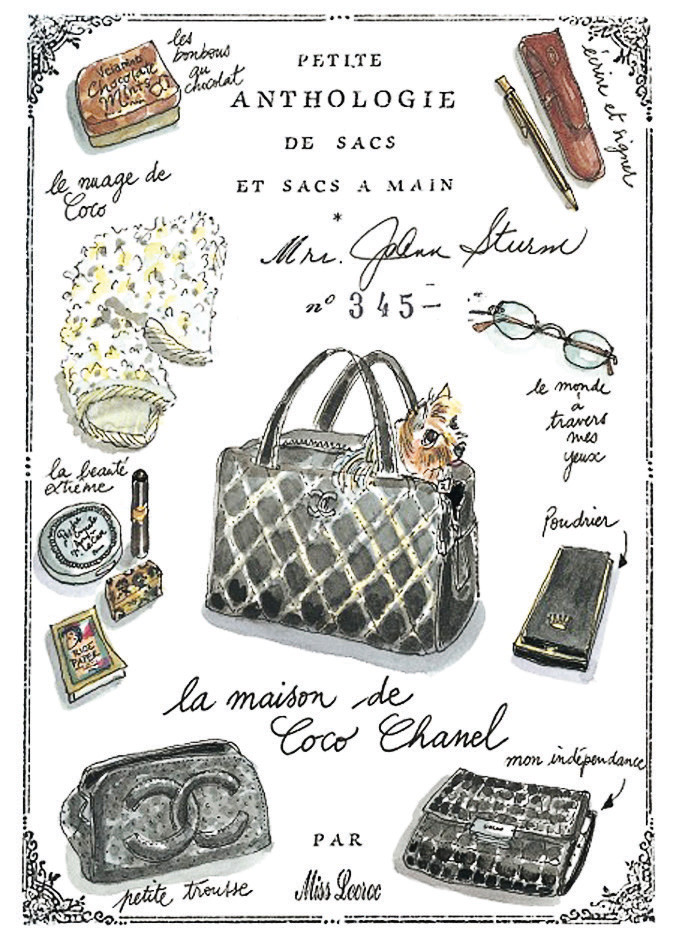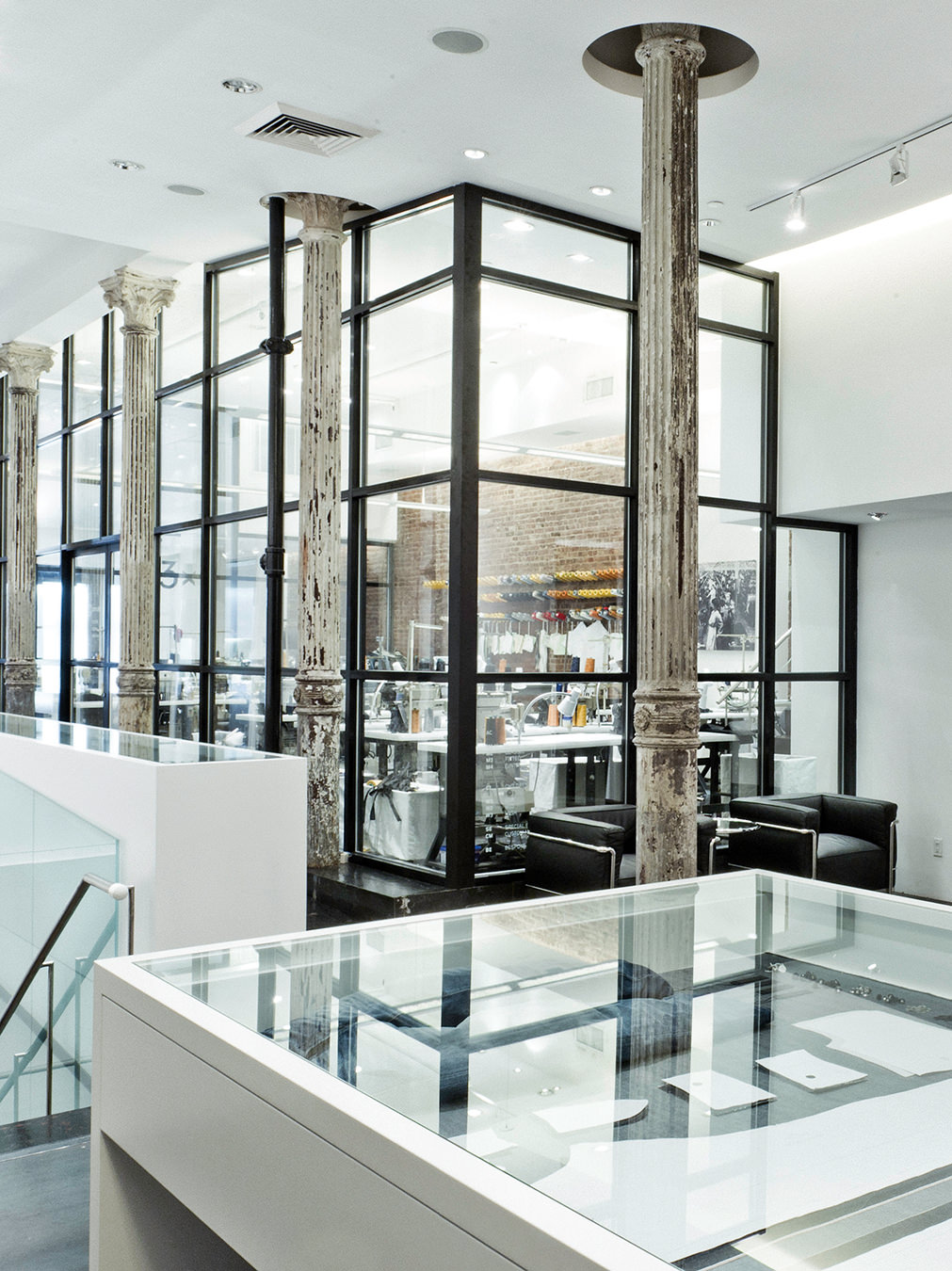Jacqueline Sullivan Gallery Expands What It Means to Keep an Archive
The exhibition A Room Is an Archive of Touch places newly commissioned, process-driven concepts in contextual dialogue with select historical designs.

“The archive has historically been a vital part of preserving culture and humanity across all civilizations since the beginning of time,” says gallerist Jacqueline Sullivan. “It is perhaps a human impulse and imperative to record and memorialize history in the pursuit of knowledge and understanding.” Mounted at her eponymously named gallery in the heart of the Tribeca district, the exhibition A Room Is an Archive of Touch extrapolates on this topic through a contemporary lens.
“Today’s ever-increasing operating speed—through groundbreaking technological advancements, the development of artificial intelligence, geopolitical upheaval, and the spectre of the climate crisis (to name but a few)—I thought it prudent to approach the theme on a more intimate scale,” she says.
Placing newly commissioned works by three polymathic talents in conversation with select historical designs, the show—on view through the end of summer 2024—takes shape as a cohesively simulated domestic interior. A pink sheer curtain frames what appears to be a living room with objects that represent a diverse array of personally expressive, socially reflexive, and formally explorative lines of inquiry. Other works are displayed around this central altar of sorts.
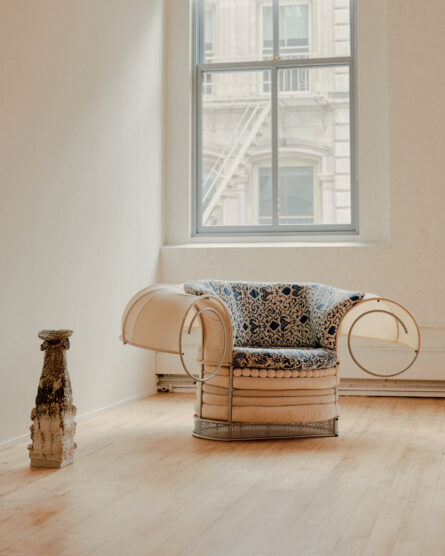
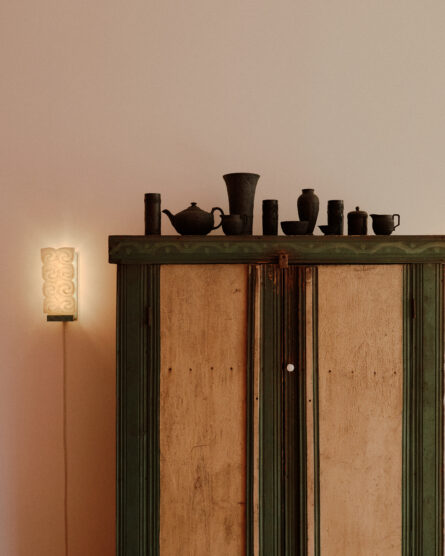
Some of the key historical pieces that help set the stage, so to speak, include Anna Castelli Ferrieri’s 4814 Lounge Chair from 1988 for Kartell, a 1920s antique flat-woven Romanian Bessarabian kilim rug, and a suite of proto-industrial Josiah Wedgwood china.
Informed by poet and essayist Lisa Robertson’s seminal book Occasional Work and Seven Walks From the Office for Soft Architecture and in particular the “Atget’s Interiors” passage, Sullivan was drawn to the idea that an archive can be both a quantitative historical record and also comprise collected accounts of tactile memory.
With works like Soft Delirium and Dakimakura: Lain, Grace Atkinson reveals her nostalgic and celebratory preoccupation with the notion of reminiscence. Incorporating vintage rabbit fur coats from her family, old linen sheets, and references to memories of beloved anime characters from her childhood, quilt-like pieces like Echo Select I stem from her investigation of erasure and revival.
Representing the physical-touch aspect of the exhibition, Jennefer Hoffmann’s deeply self-reflective ceramic vessels like Thing to Do Impossible Things and Where I Ache maintain the trace of her hand in process—inherent techniques like pinching and pulling even if further refined.
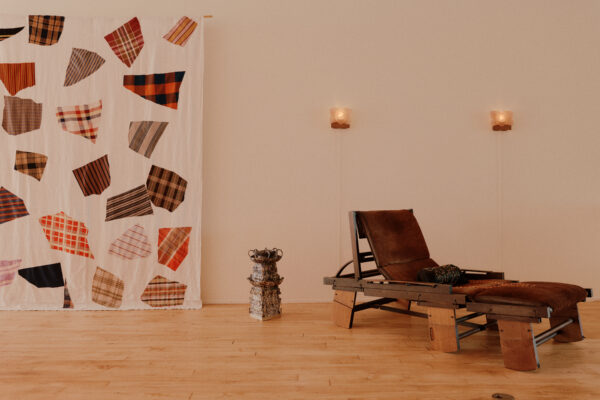
One exhibited collection that reflects another aspect of Sullivan’s curatorial framework is Natalie Weinberger’s ongoing Glass Sconce series, produced using the age-old kiln-formed cast glass pâte de verre technique.
“Pate de verre is an impressively technical and meticulous process, but what I personally find most interesting about these works is the idea surrounding ‘mould-making’ and the way in which it expresses the notion of ‘memory making’–a form of record and archival documentation,” Sullivan says. “There’s a sculpted clay body, then a refractory mould, and then the mould is filled with glass. The completion of each step is testament to, and dependent upon, what came before it in order for it to exist.”
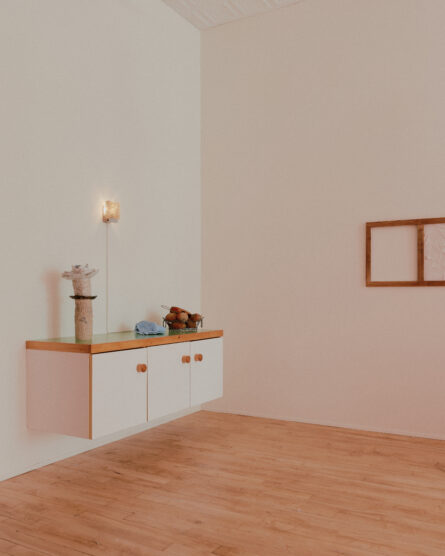

Crafted in a variety of colours including shell pink and light charcoal and adorned with hardware in various finished metals, these iterative luminaires become artifacts, freeze-framing the imprint of the cumulative process.
“Furthermore, the way in which the mould shatters and is virtually destroyed by the process feels simultaneously tragic but very human,” Sullivan says. “Our desire to ‘make things last’ is rendered impossible both within this beautiful process but also within our own existence.”
Sullivan recognizes that such explorations are entirely subjective and that the notion of assembling an archive or creating archival material either as evidence of process or results in their own right has certain limitations.
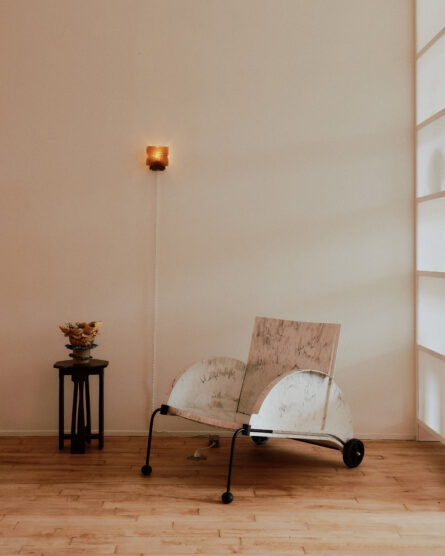
“Of course, the idea of an archive is inherently fraught,” she says. The practice evokes the primary question of the exercise itself: an archive is for whom and to what end? The inclusion and therefore exclusion of different stories is a deliberate one, and one that often maligns, ignores, and erases the voices of many.”
She adds, “I hope that the show serves as testimony to the way this lofty idea is not solely relegated to the halls of academia or federal institutions and libraries. Instead, it can meaningfully reside within our own domestic interiors in equal measure.”
Photography by WIlliam Jess Laird.



